Aleph Constellation
Space
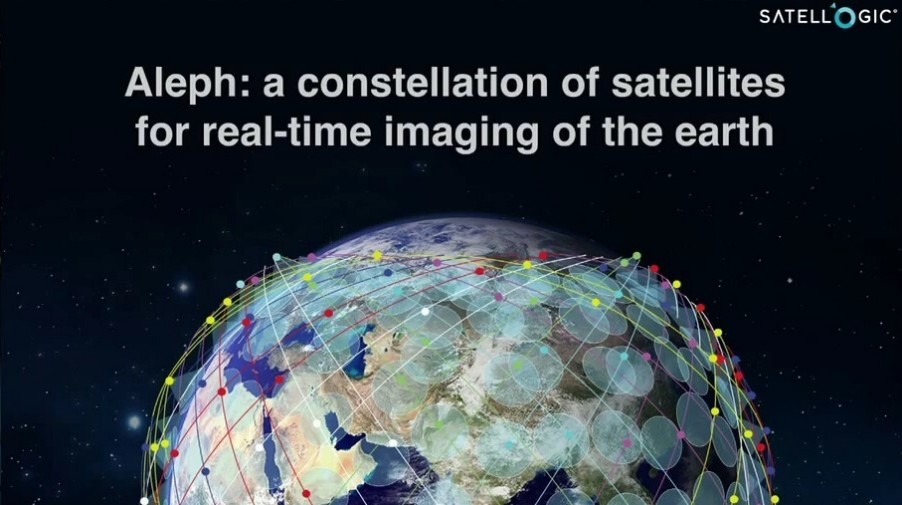
SATELLOGIC ON ITS WAY TO LAUNCHING 300 SATELLITE CONSTELLATION FOR EARTH OBSERVATION
By Called Henry
Small satellite startup Satellogic is on its way to building and orbiting a constellation of 300 Earth Observation (EO) satellites to provide near-real time imagery of the Earth, with the first non-prototype launches slated to occur this year.
Having already launched three prototype satellites between 2013 and 2014, Satellogic opened a manufacturing facility in Montevideo, Uruguay last year with the potential to build several dozen satellites per year — something the company feels is necessary to support a constellation of this size.
Emiliano Kargieman, founder and CEO of Satellogic, told Via Satellite that the factory has a 10,000 square foot clean room, able to produce the SmallSats in large quantities. Satellogic chose the location because of its close proximity to the company’s largest Research and Development (R&D) facility in Buenos Aires, Argentina. Each spacecraft in the constellation is to have an approximate weight of 35 kilograms, and will perform one-meter multispectral imaging. With multiple pilot programs already underway with prospective customers, Satellogic is eager to get its fleet in orbit. Kargieman said the factory will be dedicated exclusively to producing the company’s own spacecraft.
“The factory is dimensioned to allow us to build in excess of 50 of our satellites per year, so we expect to keep it busy over the next few years as we grow our constellation,” he said.
Satellogic originally planned to begin launching its satellites in 2015, so that a service constellation of 16 spacecraft would be active this year, but launch delays have stretched out this timeline. Kargieman said the company now plans to have an initial constellation of six satellites by year’s end, with two launching May 30 on a Long March 4B from China, and another four later on aboard a Russian Dnepr rocket.
“It’s a tough market for launch. The one we are doing in May was originally scheduled for December 2015. In a similar way Dnepr launches for their own political reasons were delayed,” explained Kargieman. “We still expect to complete the constellation of 16 satellites. It will be later than we originally planned; it will be in the first two quarters of 2017.”
SmallSats, due to their lower commercial launching value, are frequently relegated to the role of secondary payloads, paying deference to larger spacecraft that dictate missions. Kargieman said Satellogic is pursuing launch opportunities for another 19 SmallSats in 2017, after the original six, in hopes that launch will not continue to be an obstacle.
“Other opportunities to launch satellites that we are considering would potentially put us in a position to grow our constellation further than that up to 25 satellites during the year. Of course, that all is pending on launches going according to plan. If we have to judge by previous history, then it’s reasonable to expect a few delays,” he said.
In the wake of the recent SmallSat boom, a groundswell of new launch companies offering dedicated services tailored for this market has emerged. Kargieman said Satellogic is closely following these new entrants. Among the new players, Rocket Lab’s Electron launch vehicle and Virgin Galactic’s LauncherOne rocket are currently scheduled for maiden flights in 2017. Both won CubeSat launch contracts from NASA last year along with Firefly Space Systems, whose Firefly Alpha vehicle is scheduled for suborbital flight in 2017, followed by orbital missions in 2018. Kargieman expressed interest in new players offering these types of services, and said Satellogic is “talking to all of them.
“We really hope to see more availability in launch; particularly not only more availability, but faster turnarounds and shorter cycles to get our satellites in orbit,” he said. “We are also expecting — and this is the part where the promise still needs to pay off — that this will translate into more reasonable costs for launching into orbit. So far, from the small launchers, we have seen really good value propositions in terms of responsiveness, but not necessarily very competitive pricing. We expect the competition will drive prices down to bring not only more responsive, but also more competitive launch opportunities in the next few years.”
Kargieman said it will take several years to complete the constellation of 300 SmallSats, but that this is the requisite number for Satellogic to achieve the imaging rate it desires.
“A constellation of 300 satellites would allow us to average revisit times of around 5 minutes anywhere on the planet for one meter resolution multi-spectral imaging,” he said.
The first constellation would have a revisit rate starting around 2 hours for anywhere on Earth, he said.
Regarding other constellation prep, Kargieman said Satellogic is building a network of ground stations to support the large stream of data its satellites intend to produce. He said the company will use a combination of its own ground stations and third party stations to tap into a network of more than 20 around the world. Satellogic has two of its own stations operational today, and plans to complete another two before the end of the year. Kargieman said the company is also working on downstream analytics platforms for customers to access data without having to develop their own cumbersome image processing capabilities.
Satellogic has pilot programs with end users in the energy and agriculture markets today. Kargieman said the energy studies have focused on pipeline monitoring for oil and gas, and agriculture studies on crop monitoring oriented toward precision agriculture. The company is also examining opportunities in forestry related to calculating and maintaining wood stocks, and looking at carbon capture.
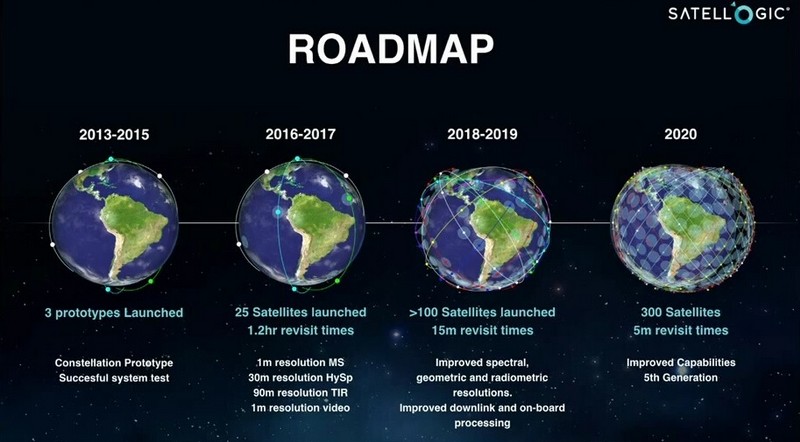
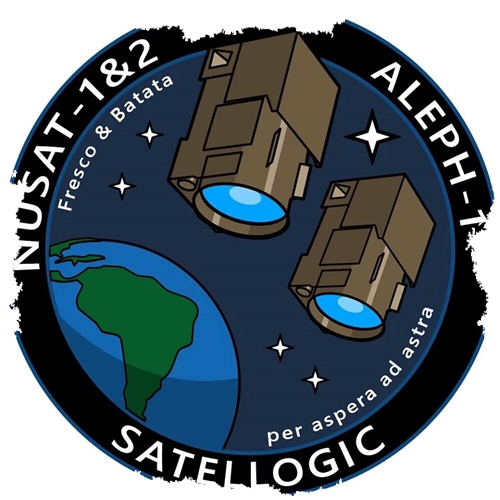

May 30th, 2016
ÑuSat-1 and ÑuSat-2 :Two identical 37kg, 450mm x 450mm x 800mm, spacecraft.
The primary objective of the mission is to commercially provide earth observation images to the general public, in the visible and infrared parts of the spectrum.
Additionally, the satellites will carry a U/V linear transponder provided by AMSAT-LU to offer services to the HAM community.In addition to opertaion in other services with downlinks on 8GHz and uplinks on 2GHz, the group is proposing a U/V transponder which will ahve a 100kHz bandwidth with an output power of 2 watts.
An additional backup telemetry downlink on UHF operating at >9k6 GFSK is also proposed.
Launched from Taiyuan Satellite Launch Center. Taiyuan, China on 30th May 2016 into 500km SSO 97.5 degree orbit with a 10:30 LTAN.

Satellogic is facing currently building a constellation of satellites and earth observation Amsat- LU invited to participate in the project of the next two satellites, ÑUSAT ÑUSAT 1 and 2 in one riding an analog linear transponder amateur radio and its corresponding antenna.
This time, the experiment AMSAT LU - still has no proper name - is smaller in size and mounted on a radiating plate 10 x 10 cm, in which the required components are also soldered to the power supply and duplexer. The set will be installed on the bus Ñusat, which provide energy and be part of several other experiments that carried this satellite.
The transponder receives UHF and VHF broadcasts, has a bandwidth of 30 kHz and output power is 200 mW.
Uplink frequency 435 935 ~ 965 LSB / CW,
Downlink frequencies 145 965 ~ 935 USB / CW.
Basic CW telemetry 145,900.
Sep 2017
NICK STOCKTON
SCIENCE 08.09.1707:00 AM
NASA'S SMARTEST SATELLITE IS GONE. CAN PRIVATE SPACE REPLACE IT?
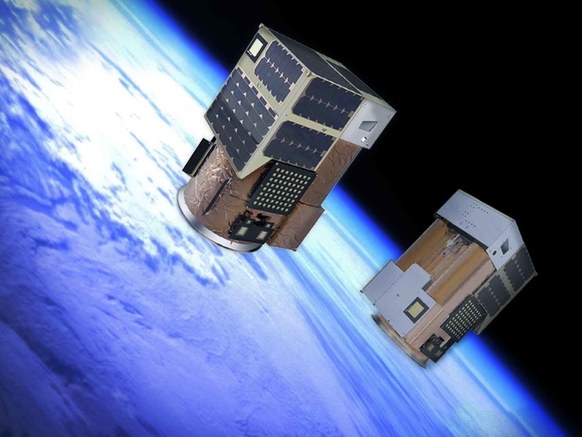
LOOK DOWN ON Buenos Aires from the sky, and you can learn a fair bit about the city. It's got a lot of concrete. Also a lot of trees. There's a bright green river delta to the north, which probably explains the ruddy-brown bay to the east. But with the right camera—a hyperspectral one—you can pick up a whole lot more. New colors emerge, hidden hues your eyes and mine aren't wired to see. And these colors reflect even more detail about the scene: the gases coming out of the city, the health of the plants surrounding it, the species of algae coloring the water offshore.
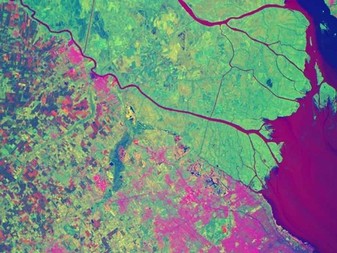 Hyperspectral imagery lets scientists see the world for what it is: molecules. Every rock, every crop, every building, and every one of you is made out of them, and every molecule reflects a different brand of photons. Pick up the signals from enough different kinds of light—Satellogic's orbiting imagers use 30 kinds, with wavelengths from 450 to 850 nanometers—and you can get a pretty good idea of a landscape's molecular composition.
Hyperspectral imagery lets scientists see the world for what it is: molecules. Every rock, every crop, every building, and every one of you is made out of them, and every molecule reflects a different brand of photons. Pick up the signals from enough different kinds of light—Satellogic's orbiting imagers use 30 kinds, with wavelengths from 450 to 850 nanometers—and you can get a pretty good idea of a landscape's molecular composition.
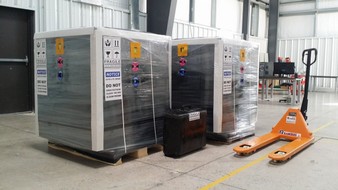 That's if the company can keep to its ambitious launch schedule. Next year it plans to launch 12 to 18 satellites, and another 60 in 2019. Each satellite has a nickname: The first two were Fresco and Batata, after a popular Argentinian dessert, and the third was Milanesat—another food
That's if the company can keep to its ambitious launch schedule. Next year it plans to launch 12 to 18 satellites, and another 60 in 2019. Each satellite has a nickname: The first two were Fresco and Batata, after a popular Argentinian dessert, and the third was Milanesat—another food ![]() reference. Numbers four and five are named after famous mathematicians Ada Lovelace and recently deceased Fields Medal laureate Maryam Mirzakhani.
reference. Numbers four and five are named after famous mathematicians Ada Lovelace and recently deceased Fields Medal laureate Maryam Mirzakhani.
Scientists love pointing hyperspectral cameras at the Earth to analyze things like crop health, or the mineral content of exposed soil. But there aren't many spectroscopic satellites in orbit: The US decommissioned one of the best, called Hyperion, earlier this year. So a private company called Satellogic wants to give scientists its data for free—the company plans to have 300 spectroscopic satellites in orbit by the early 2020s.
 Hyperspectral imagery lets scientists see the world for what it is: molecules. Every rock, every crop, every building, and every one of you is made out of them, and every molecule reflects a different brand of photons. Pick up the signals from enough different kinds of light—Satellogic's orbiting imagers use 30 kinds, with wavelengths from 450 to 850 nanometers—and you can get a pretty good idea of a landscape's molecular composition.
Hyperspectral imagery lets scientists see the world for what it is: molecules. Every rock, every crop, every building, and every one of you is made out of them, and every molecule reflects a different brand of photons. Pick up the signals from enough different kinds of light—Satellogic's orbiting imagers use 30 kinds, with wavelengths from 450 to 850 nanometers—and you can get a pretty good idea of a landscape's molecular composition.Let's say you point your imager at field of corn. The light hitting the nitrogen, magnesium, carbon, hydrogen, and other molecules in their leaves can reveal the species, its health, and whether it's getting enough water. "This has many interesting use cases in agriculture," says Emiliano Kargieman, Satellogic's founder. "It can help monitor and identify crops, show levels of herbicide use, whether disease is spreading, water quality, and overall biomass."
That kind of data is super valuable for megafarmers. And hyperspectral data can even read the gas content in the air—important if you're a pipeline company keen to track possible gas leaks. Kargieman won't name any specific customers, but he says Satellogic serves ag and oil pretty heavily.
Obviously, that sort of information would also come in handy if you're a scientists trying to make sense of the Earth's capacity for sustaining life. But why would Satellogic give it away for free? "Well, for one, we see some trends in defunding Earth science research in the public sector, so we have a certain sense of responsibility to open up our data," says Kargieman. And then there's the fact that Satellogic's dataset is fairly new—they only have three birds in the air at the moment, with two more set to launch in September. The more people they have looking at their data, playing with it, and inventing new applications for it, the better it is for their overall business.
The competition in this area is heating up. Last year Planetary Resources announced $21.7 million in Series A funding to launch 10 hyperspectral imagers aboard the company's low Earth-orbiting Arkyd satellites.
Satellogic's operation has several advantages. First, its satellites are already in orbit. Second, the company has strength in numbers. The satellite constellation—collectively called Aleph, after a spacetime vortex in a Jorge Luis Borges story—will remap the same areas in shorter and shorter intervals, as more satellites join its fleet. "By this time next year we will have better than daily remaps of the planet with the hyperspectral camera," says Kargieman.
 That's if the company can keep to its ambitious launch schedule. Next year it plans to launch 12 to 18 satellites, and another 60 in 2019. Each satellite has a nickname: The first two were Fresco and Batata, after a popular Argentinian dessert, and the third was Milanesat—another food
That's if the company can keep to its ambitious launch schedule. Next year it plans to launch 12 to 18 satellites, and another 60 in 2019. Each satellite has a nickname: The first two were Fresco and Batata, after a popular Argentinian dessert, and the third was Milanesat—another food But no matter how dense that constellation gets, it won't be enough for Earth scientists tracking some of the planet's most critical changes. "At their coverage range, they will be missing the spectral signatures of the absorption of snow and ice," says Robert Green, an Earth scientist at NASA's Jet Propulsion Laboratory. That's pretty important these days, as scientists are scrambling to figure out how polar feedback contributes to climate change. Melting ice and warming water both emit energy in the near infrared spectrum, which extends from about 700 to 2,500 nanometers.
To shift Hyperion's scientific responsibilities to a private company, scientists like Green will need to know the data is good. When it was operational, Hyperion would recalibrate once a month by shooting images of the moon—with no atmosphere, its reflectance values stay pretty much the same—and comparing those to pre-launch calibration data. "We found that the far blue, and some of the other bands were changing at a rate of over 5 percent over the life of the mission," says Betsy Middleton, a mission scientist at NASA's Goddard Space Flight Center. Most of the other bands varied a bit less, about 2 percent. But nonetheless, that's an important thing to know for anyone relying on the data.
For any scientists who are intrigued, Satellogic invites them to reach out via their website.

